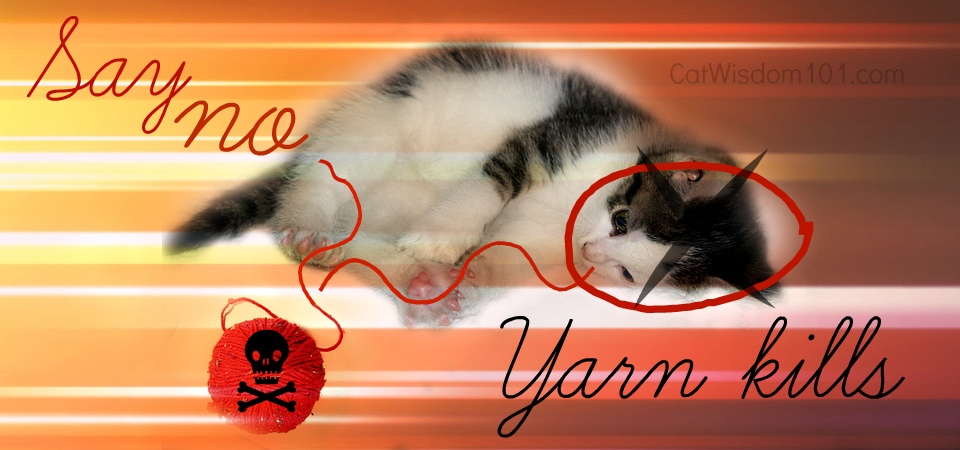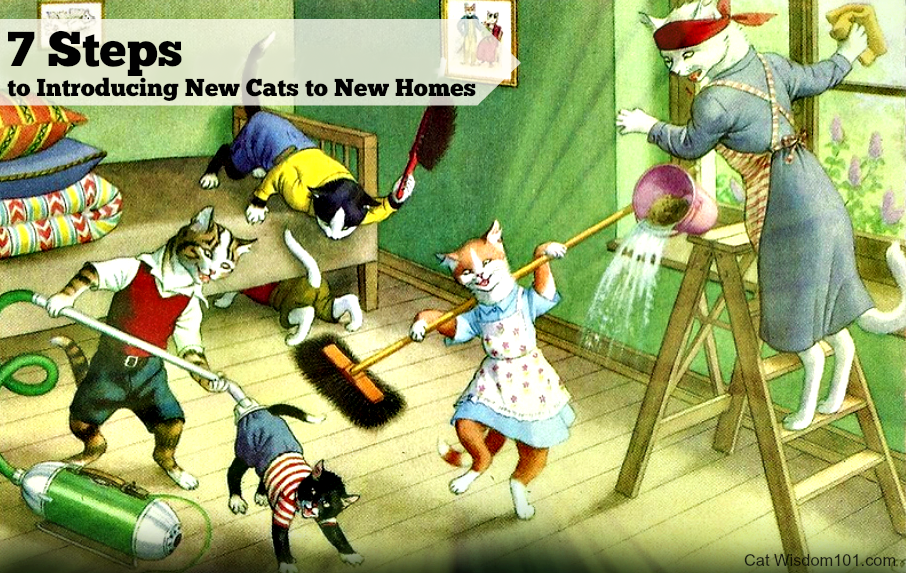Come Kitty Kitty…Cat Training/Coaching 101

In my experience, certain breeds like the Siamese, are more easily trained to come when they’re called, but all cats can be trained. When Odin, (pictured above) a wildly rambunctious one-eyed kitten came into my life, I knew he needed to learn basic training for his own safety. He dashed outside at every opportunity and learned the “stay” command while learning to go for walks outdoors with a harness. These days, he’s able to venture outdoors supervised without a harness because of his training.
Most cats already know the connection between the sound of food being prepared and being called for dinner. Food is a cats biggest motivator and the foundation for any training. Training is often done with a clicker, but I’ve never had to use one and don’t find them necessary.
Why train a cat?
I’m not fond of the word “train”and prefer coaching. No cat will do anything they don’t want to do. They are clever enough to know not to do something without a reward. The motivator or reward can be a treat, play or petting but they need a reason. The most important training/coaching command is to come when called.
Why train/coach the “come” command?
- It can save your cat’s life.
- If you need to suddenly find your cat and evacuate your home in an emergency.
- If an indoor cat slips outside your home to an unfamiliar area.
- If your indoor/outdoor cat has been outside long enough.
- When it time to administer meds.
- When it’s time go into their carrier for a vet visit or trip.
- If your cat escapes from their carrier in the vet’s parking lot.
- Learning a new skill is fun for you and your cat. It stimulates a bored cat.
Top Ten Tips For Teaching The “Come” Command.
1) Establish rapport. You must have a connection with the cat. If this is a new cat, wait until you have bonded and the cat has adjusted to their new home.
2) Choose a comfortable, quiet spot without loud TV, music or distractions.
3) The most motivating time is before mealtime or when they’re alert and not dozy from napping.
4) Select the treat your cat is craziest about. I like breaking the treat into small bite-size pieces you can hold in your hand. i.e. Greenies, I’ll break in half to allow for more opportunities for reinforcement without the calories.
5) With the treat in your hand and a few more in your pocket, approach your cat from a couple feet way. Say your training cue: your cat’s name and then come! While you’re saying the name, look at them and visualize every detail. This will help when you’re calling them from another room or out of sight. Hold out your hand. Be consistent. Always the same name, same tone, same hand cue, same word “come”. Nothing more nothing less.
6) As soon as your cat moves towards the treat, say, “Good (your cat’s name).” You can reinforce good behavior of any kind during the day, by repeating that cue but only during the positive action.
7) Let your cat eat the treat from your hand or if they prefer, from the floor or dish. Repeat the praise cue, “Good (your cat’s name) and clap your hands. Afterward, if your cat likes petting, pet them in their favorite way.
8) Keep beginner training short. A max of five minutes at least twice a day. If your cat hasn’t performed within five minutes, stop. You don’t want to be the mean lion tamer. If this happens, bring the treat to their nose, let them get a good sniff and repeat your steps even if it’s from a few inches away. It’s important that every attempt on your part results in a positive action. Remember: no action, no treat.
9) Repeat about ten times (ten treats) for each increase of distance. From a few feet away to across the room, gradually from another room, to anywhere in the house. When you cat is out of sight, visualize them in your mind before saying the cue. If you have difficulty with visualization, try looking a photograph of them. Try training/coaching from different locations so they don’t associate treats with only room room. Don’t rush! Every cat learns at their own pace. For indoor/outdoor cats be sure the command is mastered indoors before attempting it outdoors. There is no need to yell loudly. Cats have remarkable hearing and can hear your slightly raised voice from anywhere in the house (Well, unless you live in palace).
10) Once the command is mastered with treats, try the command with only , praise hand clapping and petting. Use the treats as needed once a day or once week to maintain the reinforcement. When I call, “Odin, come!” He always responds with a chirp, bounds towards me while I clap and praise him. He gets a petting and then I pick him up and bring him inside. If I give a treat, I wait until we’re inside.




9 Comments
Angie Bailey, Catladyland
This is very interesting. I have coached my Cosmo to lie down and he does it every time. This was important because when I was trying to go to bed or meditate he would want to walk all over me. Cats are smart!
Pam Kimmell
They truly are easily trained – patience and love (and shaking the treat bag) bring about many things in the training department. They are just so darn smart – they understand so much more than we THINK they do (or than they want us to know they do). Love that about felines.
Pam (Mom of Sam)
Caren Gittleman
thanks for the tips but I have never had a problem with either of my boys not coming when called (my cats)
Bobo used to literally wait for 5 minutes before he would come (I am not kidding I used to do a countdown)
Cody almost always comes when called, especially if there is bag of cat food being shaken
Fuzzy Tales
The mom used to have Chumley and Annie trained to come in when she’d go to the patio door and just give them a no-nonsense look. She did it not with treats, but by bodily picking them up and bringing them inside when they refused to come in. Haha. She uses treats with us, but frankly, we don’t always listen. Sometimes the lure of our little back space is too great. 😛
She has trained us all to use the scratchers, though, and not the furniture. For the most part. She did that with Chum and Annie by getting up every morning and going to the scratcher they had at the time, getting down on her knees and stretching up and clawing it like a cat. Then when they copied her, they got hand clapping and praise and pats. To this day she claps and praises us when we use the one of the kitty condos or scratchers, though admittedly, with us, it’s more half-hearted now, after all these years.
Ingrid King
I’m not a fan of clicker training for cats. It always felt to me like there’s an element of brain washing associated with it. I came to see it a little differently after I heard Dr. Dodman speak about it during a feline behavior workshop, but it’s still not something I’m pursuing with my own cats. I prefer treat based training, too.
Ruby usually comes when she’s called. She comes instantly when I shake the treat bag. Allegra isn’t quite as predictable.
Rumpy Drummond
Hmmm…. maybe I can train June Buggie to leave me alone!
angelina jolie
Somehow the only feline bribe-able in this household is Brad. Nobody else listen to Mama’s calling. sigh…. purrr….meow!
Kitcaboodles
Thank you these are good points about why you should teach your cats the command… I hadn’t really thought about emergency situations before. I’ve seen that they now sell cat agility kits at my local pet store… I was thinking of making my own to give Sookie and Darcy a bit of fun and excercise… Any thoughts or tips?
Kathryn
Excellent technique! Very handy~!